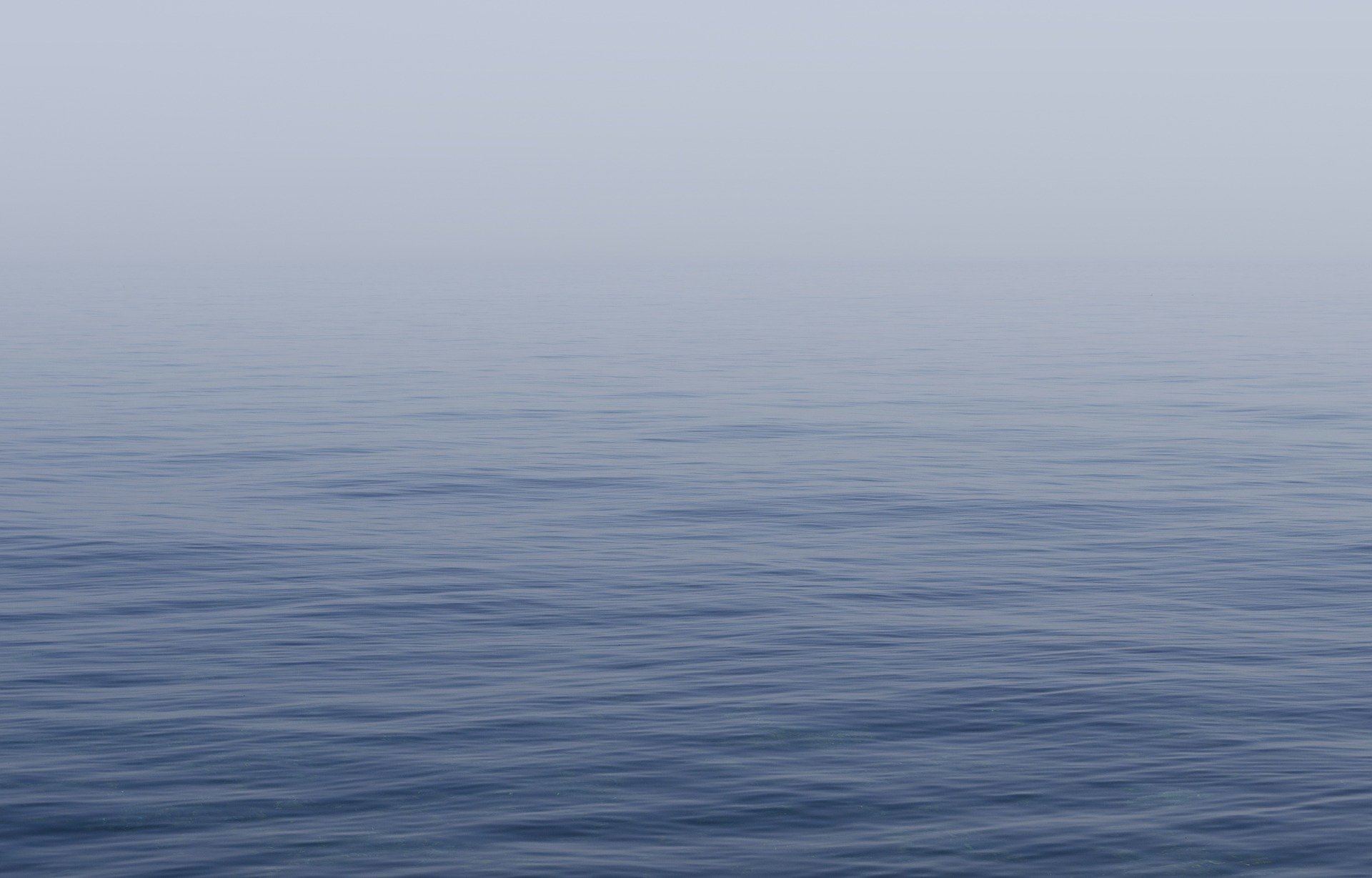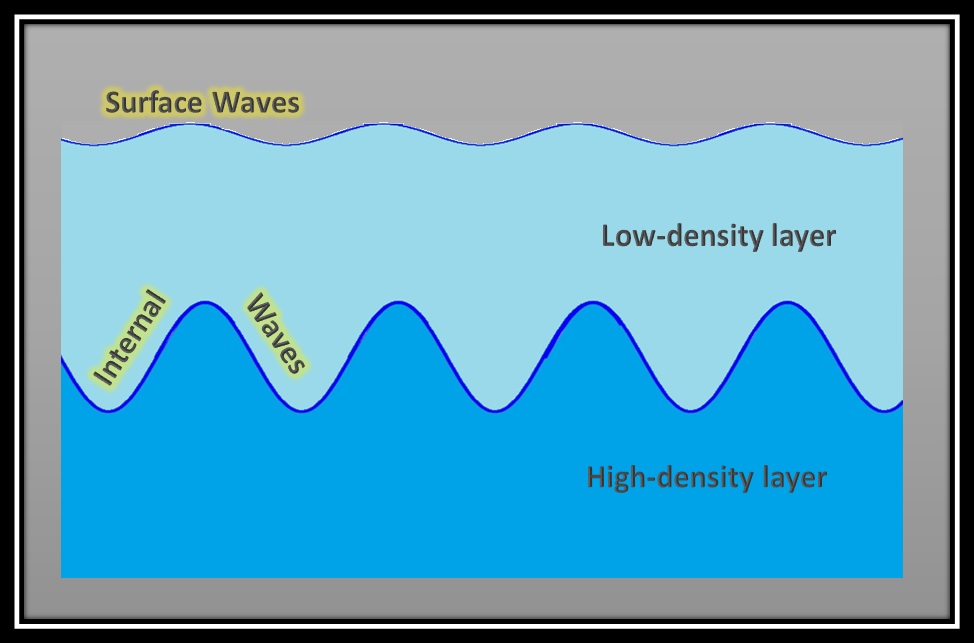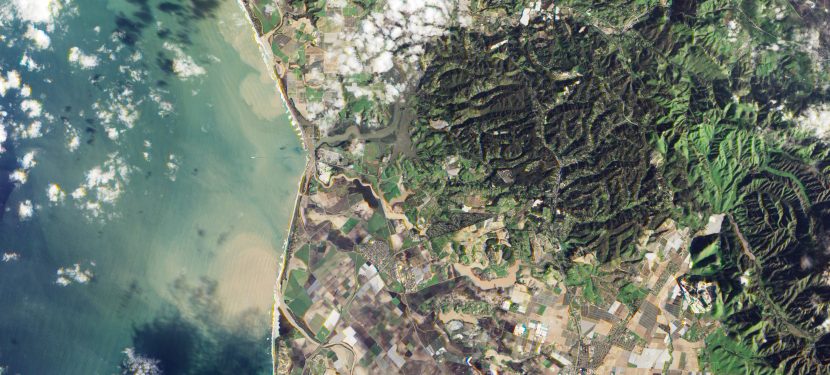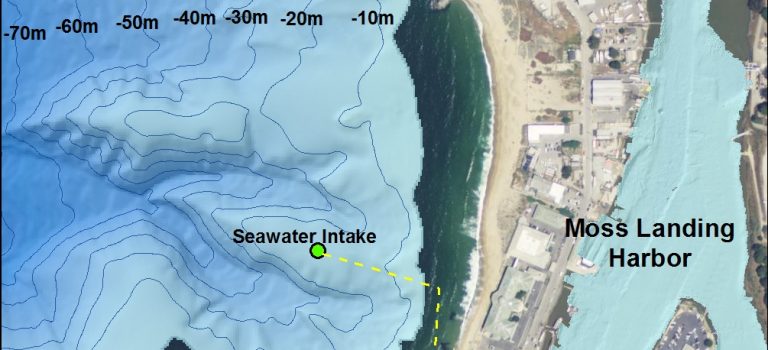
Internal Waves in Monterey Bay
Tidal Energy on the Shelf
What is an internal wave?
An internal wave is a type of gravity wave that propagates underneath the surface of the ocean, between stratified layers of water. A stratified layer is when lower density water is stacked above a higher density water in the water column. Often, stratification is driven by temperature, where warmer temperature water is closer to the surface than cooler temperature water.
Image: Internal wave formation at the interface of two density layers.

How are internal waves generated?
Internal waves are generated when water moving in a layer meets an obstacle, like a ridge. This will cause a disturbance, creating a wave in the water1. Due to the submarine canyon, Monterey Bay has a complex internal wave field. The dominant observed waves in Monterey Bay have been internal tidal bores2. These bores, driven by the sun, moon, and earth's rotation, can be observed propagating up the canyon and onto the shelf by observing fluctuations in water temperature. Changes in nutrients are also observed at tidal frequencies as internal waves travel up and down the canyon, interacting with the nearshore shelf. Internal waves can also be observed with visible satellite imagery. In areas of bright sunlight, faint ripples of internal waves below the oceans surface can be detected by satellite imagers.

Advanced Land Imager Capture over Monterey Bay. Credit: NASA Earth Observatory

Moss Landing Marine Labs Seawater intake location near the head of the canyon
Monitoring Techniques
The topography of Monterey Bay Submarine Canyon makes it a unique place for studying internal waves. Even though submarine canyons are prevalent across the globe, the dynamics are poorly understood. Submarine canyons are considered hotspots for internal wave activity. There is a rich history of studying the intricacies of these energetic, high-frequency events using a variety of oceanographic monitoring techniques. These techniques use instruments that include moored Acoustic Doppler Current Profilers (ADCPs), Conductivity, Temperature, and Depth (CTD) casts, and Autonomous Underwater Vehicle (AUV) deployments.
Explore Data
- The most recent nutrient, temperature, and tidal data in Monterey Bay can be explored at the Moss Landing Marine Labs Seawater Intake Monitoring website.
- Internal waves in the canyon have also been studied to link phytoplankton communities to physical processes. Check out the research by the Monterey Bay Aquarium Research Institute here!
Beyond the canyon: Animation of Tidal Waves in the South China Sea
References
[1] Carlowicz M, Riebeek H. Waves Above and Below the Water. Earth Obs. [accessed 2019 Dec 7]. https://earthobservatory.nasa.gov/images/87519/waves-above-and-below-the-water.
[2] Cazenave F. 2008. Internal Waves over the Continental Shelf in South Monterey Bay. San Jose State University.

